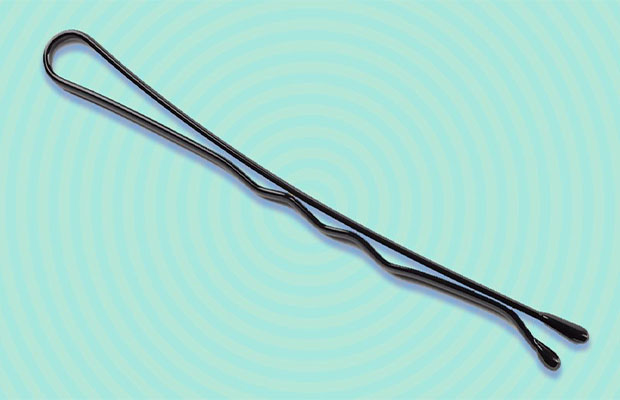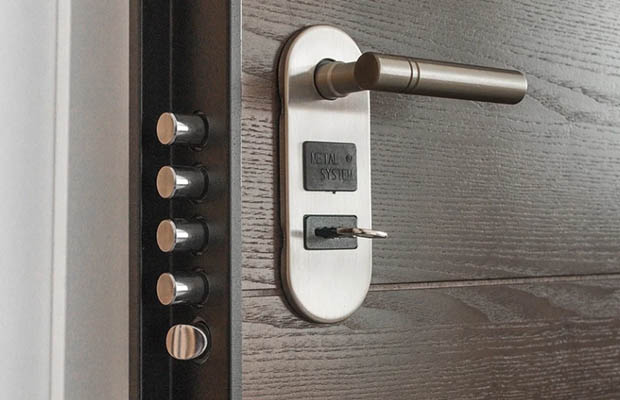We’ve all experienced being locked out once or twice—for married people, perhaps more. But having no clever means to get back in is worse than being locked out.
How to pick a door lock without tools? Without a key, there are several approaches to opening a door. Paperclips, bobby pins, and lock picks can all be used to open the lock. The lock can be pushed or shamed. For the uninspired, you can even use brute force to drill the lock or kick down the door.
In this article, we’ll examine a few tried-and-true techniques for unlocking a locked door without tools.
Table of Contents
How to Pick A Door Lock Without Tools?
- Pick locks
The infamous art of lock picking is our first strategy for opening a door without a key.
Don’t worry; I’ll explain the fundamentals of lock picking in this guide. It’s actually very simple to understand and use.
As we can see, the key raises the pins to a precise position so that the driver pins are no longer blocking the shear line when it is pushed into the plug.
We just need to raise these pins to the same height as a key would pick a lock.
Now, lock picking is best done with tools, and despite what most people believe, lock picks are generally not prohibited. However, if you’re in a bind, you can occasionally get away with utilizing homemade tools like paperclips and bobby pins.
- A lock bump
Lock bumping is a method that can be used to unlock a lock without a key. Similar to lock picking, lock bumping necessitates the use of a unique instrument called a “bump key” or “999 key.”
I thought this post was about how to access locks without a key, but wait.
The bump key, however, is not your typical key.
A bump key is a uniquely designed key in which each incision is made to a maximum depth of nine. Therefore, a bump key can be made from just about any new key blank.
Pins are abruptly bumped by bump keys, which causes them to jump to the shear line, where they should be.
- Shimming
Loiding, commonly referred to as “shimming,” is a physical bypass that involves aiming a thin tool, such as a credit card, latch-slipping tool, or even a knife, towards the spring-latch of a door lock.
By slipping the thin object, which we refer to as a “shim” or “loid,” between the door latch and the strike plate, we can retract the spring latch.
However, to perform loading, you must be aware of which way the latch’s slant is facing.
Knowing which side the hinges are on makes it simple to determine. The tilt of the door is facing you if the hinges are not on your side.
The fact that some locks used a deadlatch plunger to prevent loiding is a disadvantage of this approach. If you’d want to learn more about the amazing security advancement known as the deadlatch plunger, check and read this article on the components of a doorknob lock.
Loiding is ineffective on deadbolt-secured doors as well.
- A credit card
You have undoubtedly seen it countless times in movies. A person inserts their VISA card between the door and the frame after taking out their card. They move it slightly, and with a “click” the door opens.
On doors with spring-latch doorknobs, loiding a lock with a credit card actually works fairly nicely.
However, in order to employ this technique, the hinges must be on the side of the door that is opposite you and the slant of the latch must face the exterior of the door.
Additionally, there must be some space between the door and the doorframe for movement. Linking could be impossible if the doorframe has a tight trim.

- Utilize a door latch wrench
Only latches pointing outward are compatible with credit cards and knives. What if the latch’s tilt is in your direction?
A latch-slipping tool can be used in this situation. A slender metal tool with a hook on the end is used to slip latches.
Insert the latch loiding tool between the door above or below the latch to utilize it. Slide the hook around the latch after inserting the tool through the door seam.
The door will then open once you pull on the tool to retract the spring latch.
Online retailers provide latch-slipping tools, but you can also manufacture them on your own.
- Use a knife
Use larger things, like a butter knife, if your door and door frame are separated by a significant amount of space.
Knives, like credit cards, only function when the latch’s slant is toward you.
If you want to pick a lock with a knife, glide the blade until you feel the latch between the doorframe and the lock. When the latch fully retracts and the door opens, push the blade into the latch.
Read More: How to Close A Pocket Knife?

- Screwdriver
When working with an internal door that has a privacy lock—those doorknobs with the tiny hole on them—a screwdriver can come in helpful.
A flathead screwdriver tiny enough to fit into the hole in the doorknob is required to unlock a privacy lock.
If your doorknob has a button lock, you must insert the screwdriver completely into the hole before the door will unlock.
To install a screwdriver into a thumb-turn doorknob, you must first place it in the hole and then spin it until the tip of the screwdriver falls into a slit. The screwdriver will then be turned a little bit more until a click is heard.
- Take away hinges
If you’re fortunate enough to have the door’s hinges on your side, you can enter the room with ease.With a screwdriver and a hammer, the majority of hinges may be removed.
The door will swing open from the latch once it is released.
Keep in mind that no door that you depend on for security should ever have its hinges outside.
- Damaging entry
Sometimes you need a door opened and don’t care what it takes, whether there is a fire hidden behind a locked door or your children locked themselves in their room using your credit card.
You can always use destructive entry methods if you’re in a bind and don’t mind paying for a new door, doorframe, or lock.
- Use A Bobby Pin
One of the methods most frequently used to open doors is the bobby pin lock pick. Any door that uses tumbler mechanisms as its locking mechanism can be opened using this tool, which is referred to as a rake pick. The most fundamental and straightforward to use is this.
The secret to this practical hack is as easy as using a bobby pin. It is not, however, a simple task. Finding the ideal candidate to ensure a smooth process is the challenging part. Find a bobby pin that is thin and extremely flexible (the more flexible, the better) in order to execute this life hack.

- Request a locksmith
You will occasionally have to give up and reduce your losses. Although the lock prevailed, the battle is far from done.
The best course of action in these situations is to call a locksmith, who will essentially try many of the things on this list but with the skill of an experienced combatant.
Upgrade Home Security With Locks That Can’t Pick
Our locks simply don’t have the same issues as the mass-produced locks you might buy at the hardware store because they aren’t made in the same way. For instance, you cannot pick our locks using a pick set or lock bumping. As Ricky demonstrates in the video, some burglars would rather drill through the lock to enter a building quickly (possibly due to a lack of patience or a desire to conceal their crime). Even though drills are noisier, they are not unusual and do not indicate that a crime may be happening.
As a locksmith, Anthony occasionally has to drill through locks, but when Jon shows him the FBS door at Premium Kitchens, he has to admit that even if he tried to drill it, he wouldn’t even know where to start. It probably goes without saying, but FBS keys cannot be duplicated. You can’t just walk into a hardware store and ask for a copy of our keys because they don’t have the tools for it.
FAQs
How to pick a lock without a tension wrench?
The only possible way to pick a normal lock without a tension wrench is to rake it while twisting the pick.
How to pick a deadbolt lock without tools?
One of the best-known ways to unlock a deadbolt without a key is by using two bobby pins.
What can I use instead of a tension wrench?
Any small piece of flat metal can act as a tension wrench. A section of wire from an underwire bra can be used in place of tension wrenches. An insert for a windshield wiper can also be used as a tension wrench.
Can you use a screwdriver as a tension wrench?
Yes. The qualifying condition is whether the screwdriver tip is small enough to NOT obstruct the action of the picks. Because his boss was too cheap to buy the necessary tools when he was an apprentice, I know a professional locksmith who uses a screwdriver as a tension wrench.
In an emergency, which is preferable, breaking the door down or picking the lock?
In most cases, it will be preferable to kick down the door in an emergency. Lives cannot be replaced, only the door.
How can I open a locker that is included in a door’s lock?
In some instances, the knob’s front can be removed to show a keyhole. If not, dial a locksmith.
What should I do if I am unable to pick the lock in a crisis?
Make an emergency phone call, such as 911. If it can wait a few minutes, call a locksmith. If it’s urgent, just dial 911, speak to a locksmith, or try to obtain a key. If possible, you could break a window to gain access, but you must exercise extreme caution to prevent cutting yourself.
Summary
As we can see, there are numerous effective methods for opening locks without a key.
We discovered that we can kick down doors, remove hinges, shim latches, and pick locks.
However, this manual barely touched the surface. Consider visiting my Academy, where I post additional free lock picking and security-related tips if you want to learn more about the subjects covered in this article.
I’m hoping that this article provided you with all the information you required to open a door without a key.


